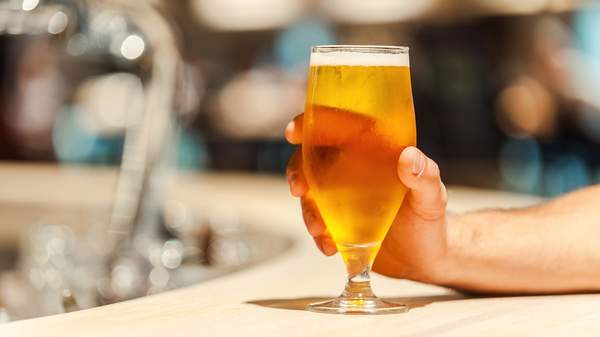In partnership with
Overview
There are many great evils in this world, be they buses that drive through big puddles, the industrial war complex or that guy who invented that frog ringtone back in the early '00s. But let's be clear: beer — that beautiful, hoppy liquid of gods — isn't one of them.
It's understandable if you're a little bit sceptical though. Recent consumer research has revealed that a whopping 87 percent of Aussies don't actually know what goes into beer, and 73 percent want to know more about what goes into the drink. So what exactly is beer made of? Is it all wheat and sugar? What about preservatives and other ingredients we can't pronounce? There are a lot of persistent (and downright wrong) beer myths floating around giving beer a bad rap, and we're jumping on board to debunk five of the big ones.
MYTH #1: BEER IS FULL OF CARBS
Let's level the playing field. Beer isn't some sort of carb outlier. To put it in perspective a bottle of Little Creatures Original Pilsner has 8.6 grams of carbs, which isn't huge. The reason for the persistent beer = carbs myth is that beer is brewed with starch (i.e. barley or wheat) and sugar, which are both carbohydrates. But when the brewing process begins, the starch actually breaks down into sugar — and once the yeast is added during fermentation, almost all of that sugar is then converted to alcohol and carbon dioxide, thus getting rid of most of the sugar and turning the liquid into beer.
MYTH #2: BEER IS HIGH IN SUGAR
We know what you're thinking: if the beer's 'low carb', they must just add in artificial sweeteners to keep that sweet, nommy aftertaste. Well, you'd be wrong on that one (although, you're not alone — 94 percent of Aussies overestimate the amount of sugar in beer). For example, James Boag's Premium and Hahn SuperDry are both on average 99.9 percent sugar free. The sweetness you taste in some beers — those toasty notes of caramel, chocolate and toffee — is not the result of added sugar, but rather the consequence of the natural malts and hops and the way they're broken down. Add to that the occasional inclusion of fruits in the process like banana, apple, pear and — more recently — adventurous options like coconut (and even bacon), and you begin to understand how and why beer can taste sweet without the addition of sugar.
MYTH #3: ALL BEERS HAVE ADDED PRESERVATIVES
They don't, and for one very simple reason: beer doesn't need them. First of all, two of beer's key components, hops and alcohol, keep beer more fresh longer — meaning they not only contribute to the flavour of the drink, but also help prolong its overall shelf life. Secondly, the hygienic quality assured by modern brewing methods and packaging systems prevents bacterial contamination and mitigates the need for added preservatives. In short: today's beers — including beers as wide-ranging as James Squire One Fifty Lashes Pale Ale to XXXX Gold — are made exceptionally well and can comfortably look after themselves on the shelves or in your fridge without any additions.
MYTH #4: BEER NEEDS TO BE ICE-COLD
Beer doesn't always have to be chilled to taste good. While there's probably nothing better than a cold brew on a stinking hot day, a pilsner actually tastes really good when consumed slightly below room temperature. When it's not 'ice cold' it's more aromatic and you'll be able to taste more flavours.
But here's the thing: temperature isn't the drink's number one villain. It's light. Just a few minutes of sunlight can 'skunk' a beer, making its taste go a little off. For that reason, brown bottles are best, as clear or green bottles are less adept at keeping the sun's rays at bay.
MYTH #5: DARK BEER HAS MORE CALORIES THAN LIGHT BEER
A common misconception in the world of beer drinking is that the darker a beer is, the heavier it is — and the more calories it contains. But that's not necessarily a given. The amount of alcohol content is a better indication on the amount of calories it could have, and has no bearing on the hoppy drink's hue. So if you're tossing up between a pale ale or a dark ale on the basis of energy content, don't — they both contain around the same number of calories.
For more details on nutritional information of the beer in the Lion portfolio, watch this video and visit beerthebeautifultruth.com.
